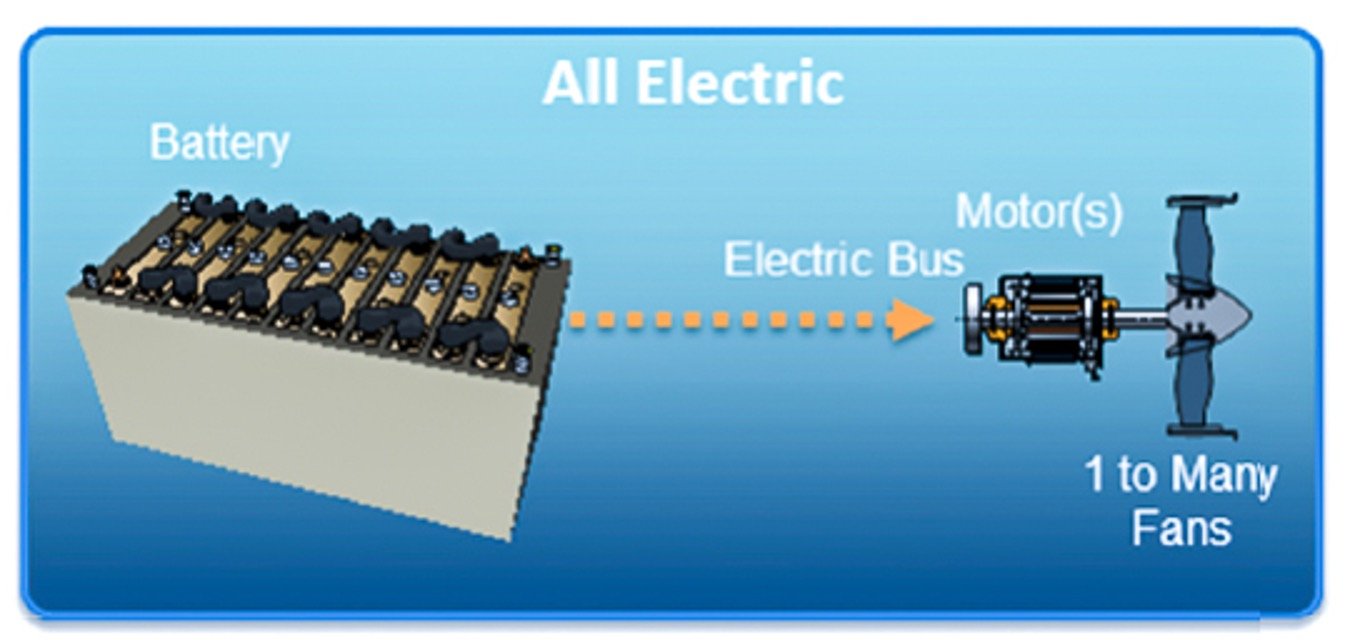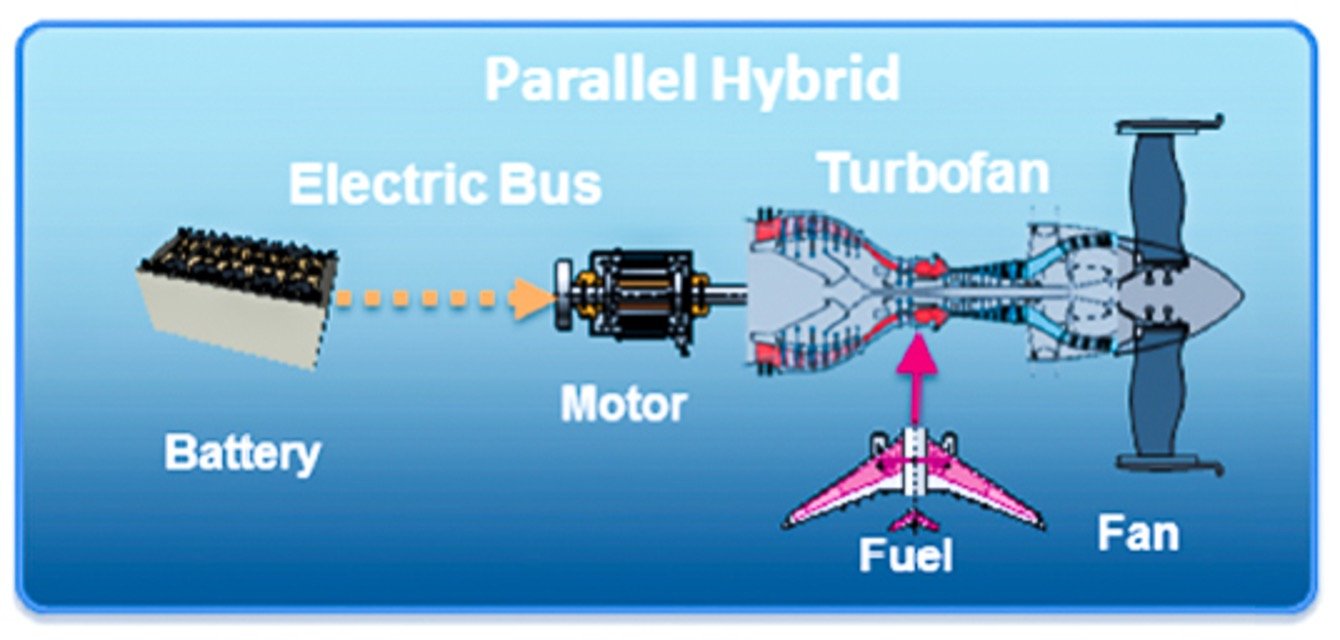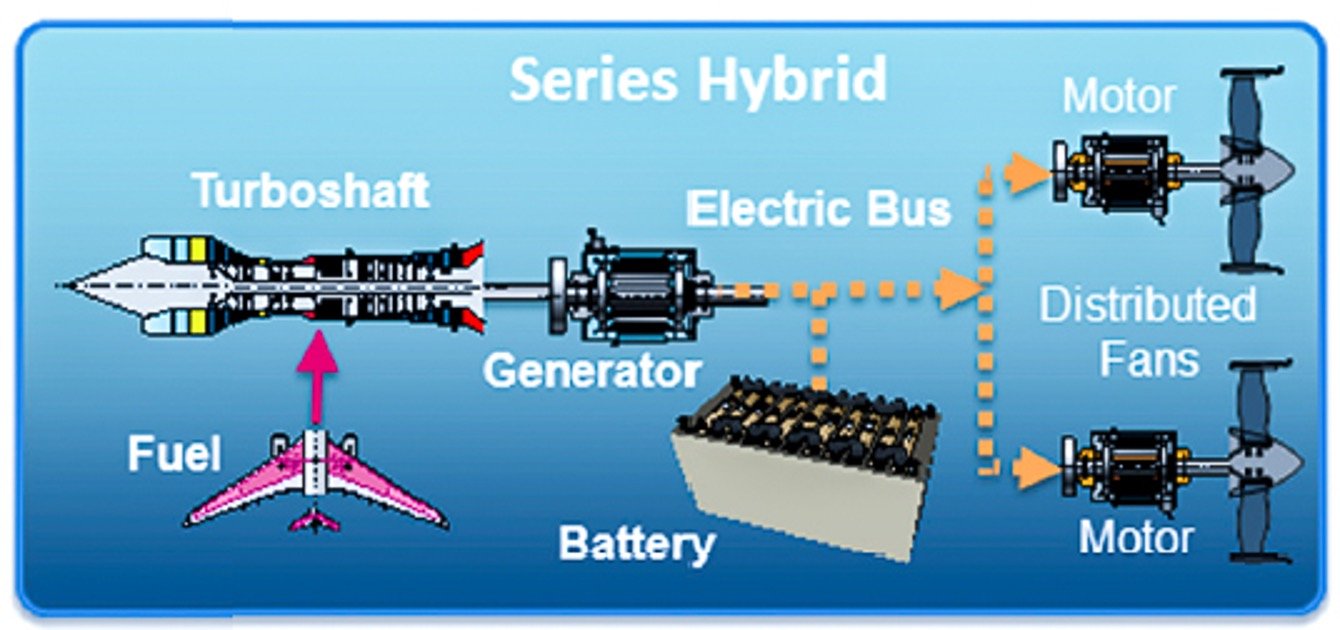Electric vs. Hybrid Aircraft Propulsion is one of the most researched topics lately. Aircraft designers have experimented with various forms of electric propulsion for decades. The concept offers several benefits, such as reduced fuel consumption, reduced emissions and quieter flights compared to fuel-burning propulsion. However, challenges related to the weight and trip-range limitations of energy storage systems have limited the adoption of electric propulsion.
Increased focus on environmental sustainability has ramped up efforts to make electric propulsion and hybrid-electric propulsion more viable in the aviation industry. Numerous electrically-powered aircraft designs have been introduced since 2000, and the National Aeronautics and Space Administration (NASA) predicts electrified aircraft propulsion (EAP) technologies will be implemented in commercial aircraft by 2035. Let’s take a look at electric and hybrid-electric propulsion — what the two methods have in common and how they differ.
Electric propulsion
Simply stated, an electric aircraft is powered solely by electricity. The electricity may be generated via onboard energy storage systems such as batteries or off-board sources such as solar energy converted into electricity using photovoltaic materials. In most cases, electric motors drive propellers or turbines to propel the aircraft.

In addition to reducing emissions and noise, electric motors do not lose power with altitude, unlike internal combustion engines, eliminating the need for turbochargers and other power-boosting measures. Electric motors also require less maintenance than fuel-burning engines, according to industry sources.
Some of the challenges with electric aircraft propulsion are similar to those experienced with electric automobiles — battery weight and trip-range limitations. While electric motors generally weigh less than equivalently powered piston engines, the batteries weigh more than the equivalent in fuel. And the need to recharge batteries becomes even more critical with aircraft since recharging resources are typically ground-based.
Heat generated by electric motors is also a challenge. Approximately 20% of energy generated by electric motors is dissipated as excess heat that must be cooled, according to NASA.
To overcome the extra weight and energy to cool electrical systems, researchers and designers have focused on developing more efficient systems to keep components cooled while minimizing weight and heat loss. Innovative power and thermal management systems have been designed to increase efficiency and minimize heat loss. New materials have been developed to reduce weight and improve performance of mechanical and electrical components. And ongoing research continues to find opportunities to fine-tune electric propulsion designs.
Hybrid-electric propulsion
In hybrid electric aircraft, a combination of electric motors and internal combustion engines are used to propel the aircraft, offering increased flight ranges compared to pure electric aircraft. The two energy sources may work in parallel or series.
In a parallel hybrid system, an electric motor and a fuel-burning engine are connected to a common shaft that drives a fan, so one or both can provide propulsion at any given time. In a series hybrid system, only the electric motors are connected directly to the fans, and the fuel-burning engine drives a generator, which in turn drives the motors or charges the batteries.


Parallel and series hybrid systems each have pros and cons. While the interaction of two distinct power sources in parallel systems introduces additional design complexities, parallel systems have been shown to produce slightly better energy savings and emission reductions than serial systems. Series hybrid systems are compatible with distributed propulsion concepts, which enables the use of multiple motors and fans.
In addition to parallel and series systems, combined series-parallel partial hybrid systems have also been developed. With this approach, one or more fans can be driven by a gas turbine engine, and additional fans are driven by electric motors powered by a battery or a turbine-driven generator.
Electric vs. Hybrid Aircraft Propulsion
Electric and hybrid aircraft propulsion systems differ primarily in their energy sources, system configurations, and operational principles. Here’s a detailed comparison:
1. Energy Source
- Electric Propulsion:
- Powered entirely by electricity stored in batteries or sourced from fuel cells.
- Eliminates the need for fossil fuels.
- Hybrid Propulsion:
- Combines a traditional internal combustion engine or gas turbine with an electric motor.
- Can use fossil fuels, biofuels, or sustainable aviation fuel (SAF) alongside electricity.
2. System Configuration
- Electric Propulsion:
- Uses batteries, electric motors, and power control systems.
- Simplified mechanical design compared to traditional engines.
- Requires high-capacity batteries for sufficient range.
- Hybrid Propulsion:
- Incorporates both fuel-based engines and electric components.
- Can operate in different modes:
- Electric-only for short distances or low power needs.
- Engine-only for longer distances or high power demand.
- Combined operation for peak efficiency.
3. Performance and Efficiency
- Electric Propulsion:
- Highly efficient at converting stored energy into thrust.
- Limited by current battery technology, resulting in shorter ranges and lower payload capacities.
- Virtually silent operation and zero in-flight emissions.
- Hybrid Propulsion:
- Offers greater range and flexibility than fully electric systems.
- Can optimize fuel consumption by using electric motors during specific flight phases (e.g., takeoff, climb).
- Still emits greenhouse gases when the combustion engine is used.
4. Environmental Impact
- Electric Propulsion:
- Zero emissions during operation if electricity is sourced from renewable energy.
- Minimal noise pollution.
- Hybrid Propulsion:
- Reduces emissions compared to traditional engines by leveraging electric power for certain operations.
- Not entirely emission-free.
5. Applications
- Electric Propulsion:
- Suitable for small aircraft, urban air mobility (e.g., air taxis), and short-range regional flights.
- Limited to experimental or emerging commercial applications due to range constraints.
- Hybrid Propulsion:
- More adaptable for larger aircraft and longer routes.
- Used as a transitional technology bridging conventional and fully electric systems.
6. Challenges
- Electric Propulsion:
- Battery energy density is a significant limitation.
- Longer charging times and infrastructure requirements.
- Hybrid Propulsion:
- Complex systems increase maintenance demands.
- Weight and integration challenges with dual propulsion systems.




